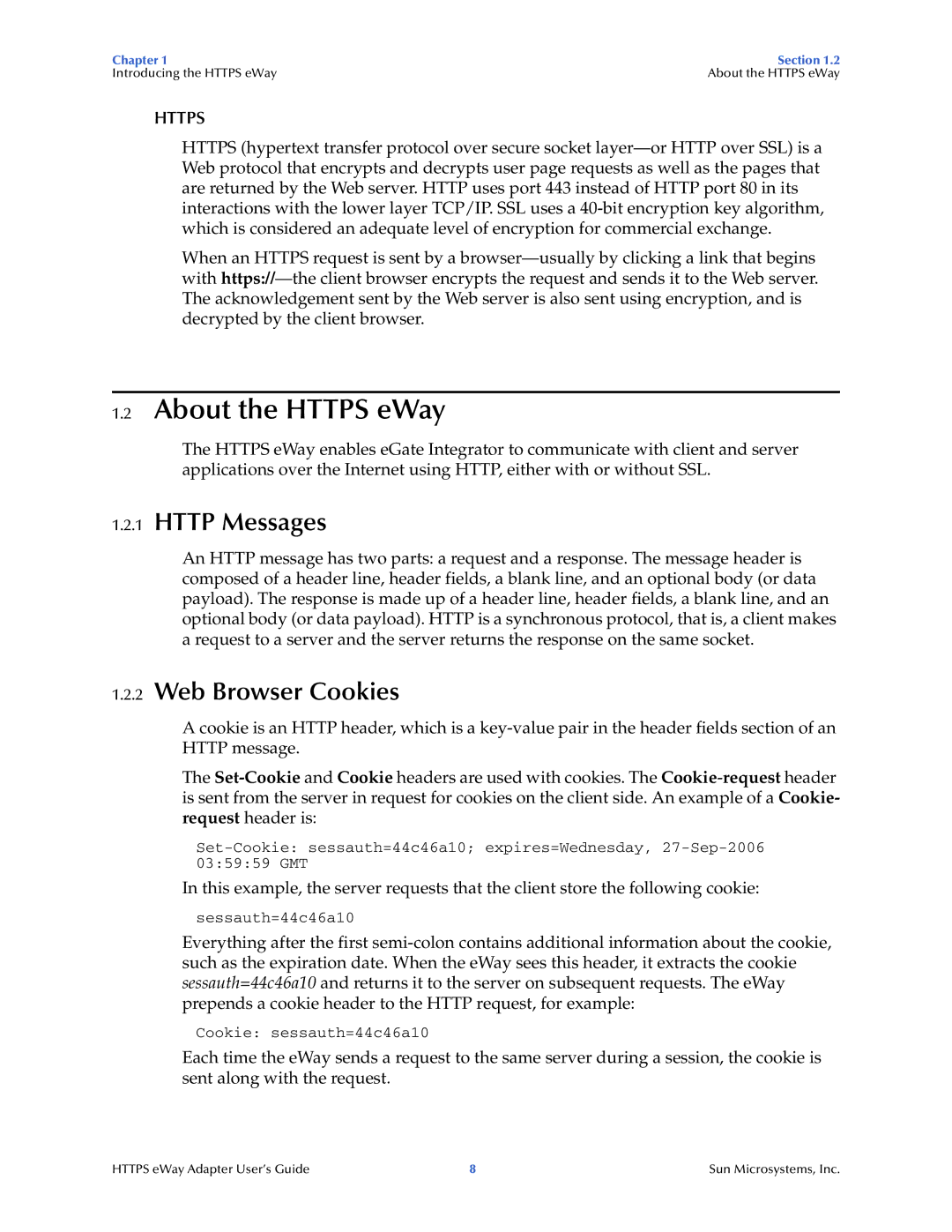Chapter 1 | Section 1.2 |
Introducing the HTTPS eWay | About the HTTPS eWay |
HTTPS
HTTPS (hypertext transfer protocol over secure socket
When an HTTPS request is sent by a
1.2About the HTTPS eWay
The HTTPS eWay enables eGate Integrator to communicate with client and server applications over the Internet using HTTP, either with or without SSL.
1.2.1HTTP Messages
An HTTP message has two parts: a request and a response. The message header is composed of a header line, header fields, a blank line, and an optional body (or data payload). The response is made up of a header line, header fields, a blank line, and an optional body (or data payload). HTTP is a synchronous protocol, that is, a client makes a request to a server and the server returns the response on the same socket.
1.2.2Web Browser Cookies
A cookie is an HTTP header, which is a
The
In this example, the server requests that the client store the following cookie:
sessauth=44c46a10
Everything after the first
Cookie: sessauth=44c46a10
Each time the eWay sends a request to the same server during a session, the cookie is sent along with the request.
HTTPS eWay Adapter User’s Guide | 8 | Sun Microsystems, Inc. |
